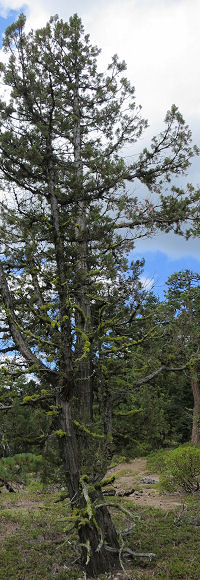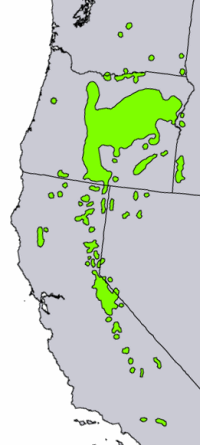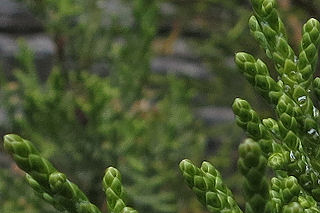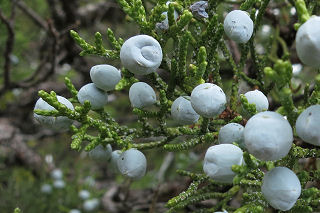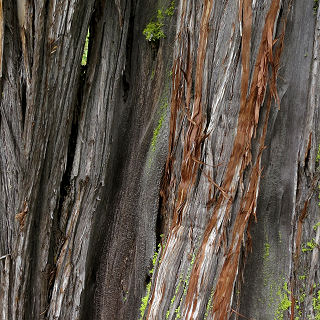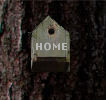 |
Northwest Conifers |
AboutAll ConifersConifersLow-elevationHigh-elevationOthersEast SideSouthwestNon-natives——————Conifer ConesIndexMore Info |
Western Juniper – Juniperus
occidentalis
|
|
|
This juniper, common in eastern Oregon, can grow to a height of over 65 feet (20 meters). It's easy to identify because it's the only tree-size juniper you're likely to find in most of its range. Leaves: Most leaves are scaled, appearing in alternating groups of 3 on the twig. Each scale has a resin dot, which distinguishes it from Rocky Mountain juniper. Some leaves are awl shaped with prickly points. Cones: The blue berry-like cones are soft and juicy with a white waxy coating. The size is about 3/8 inch. They are a food source for several bird species. The birds, in turn, disperse the seeds. Bark: The young bark is thin, smooth, and brown. On larger trees, it becomes gray and flaky and then fibrous and reddish brown. Where it grows: Western juniper grows throughout most of eastern Oregon and a few locations in central and southeastern Washington. It also grows in the high elevations of the Sierras in California. Uses: Although much maligned by cattle ranchers for its propensity to crowd out grasses, western juniper is loved by wood workers for its unique natural growth patterns and its beautiful grain and colors. Names: The
scientific name, occidentalis,
means "western." Other common names: Sierra juniper, yellow juJuniperus occidentalisniper. Subspecies: The western juniper growing in the Sierras is sometimes considered a separate subspecies from those in Oregon and Washington, and called Sierra juniper. |
|
© 2012 Ken Denniston

